(1398 products available)



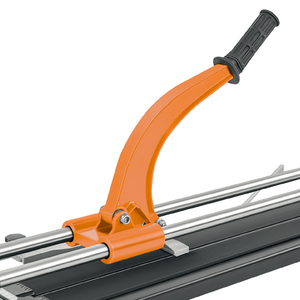



































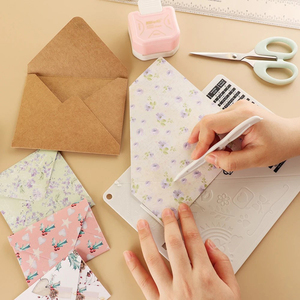







































































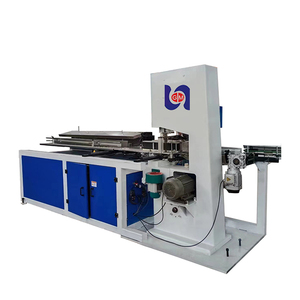



























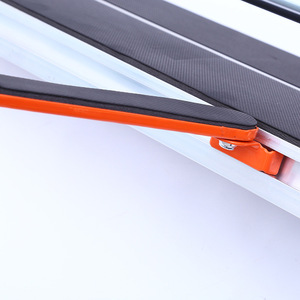




























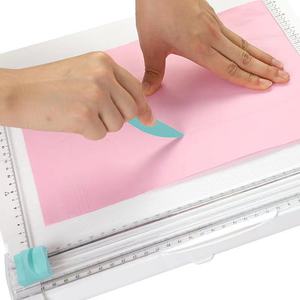




























There are a few common types of scoring cutters. They all help to score or make fold lines on different materials. Choosing the right one depends on what the project needs.
Manual scoring cutter
A manual scoring cutter uses hand power to make score lines. It is best for small projects that do not require a lot of work. The person using it has control over the depth and angle of the score. This allows for precise work. Manual scoring cutters work well on thin materials such as paper, plastic, and soft wood.
Electric Scoring cutter
An electric scoring cutter does the scoring automatically with a motor. It uses a scoring wheel to press down and make lines. Electric cutters are faster than manual ones. They are also better for larger projects. They do not need as much force from the person using them. Electric cutters are good for consistent work on large amounts of the same item.
Table Scoring cutter
A table scoring cutter is mounted on a table. The material is fed into the machine to make score lines. Table cutters are meant for very high production work. They can score large amounts of materials very quickly without becoming tired. These machines also make very precise score lines. Use table cutters when a project requires either a large quantity or very consistent work. These cutters are best for huge demand, commercial, or industrial foldable box projects.
Rotary Scoring cutter
A rotary scoring cutter uses a wheel that turns to press and score the material. The pressure can be adjusted to different levels. This makes the wheel able to score soft or tough items. Rotary cutters create very even score lines across the full surface area. They function without heat and do not cause damage. Rotary scoring cutters can handle different materials equally well. Plastic, metal, and glass are all scored perfectly by this machine. These cutters are the best solution for scoring a diverse range of materials.
A scoring cutter is helpful in many industrial applications.
Packaging Industry
Packaging industries use scoring cutters a lot. They help create fold lines on boxes and packaging materials. This makes the boxes easier to fold during packing and shipping.
Printing Industry
Most printing companies have scoring cutters, too. They are used to make score lines on paper for brochures, greeting cards, and more. The score lines ensure the paper folds neatly without cracking.
Automotive Industry
The automotive industry has workers who use a scoring cutter to score materials like leather and vinyl. This makes it easier to install interiors, seats, and dashboards.
Textiles and Fabrics
Textile factories score thick fabrics and composites. They use deep scoring cutters to create even fold lines on their complex fabric and composite designs.
Construction and Carpentry
Scoring cutters work for score lines on drywall and cement board. Construction workers use them to make clean breaks in these tough materials.
Signage and Display Manufacturing
Sign makers use scoring cutters to manufacture their display boards and signage quickly. The cut helps the boards to be cut and handled, promoting better folding and installation.
Stamping and Molding
During stamping and molding, scoring makes any later bending easier. In this application, it acts like a pre-weakening of the areas that need to be bent into shape through final assembly.
Foam and Padding Products
Scoring cutters help workers create even fold lines on their foam padding. This helps guarantee workers can install the insulation systems easily with less effort required.
Blade Materials
Scoring cutter blades are made from either hard carbon steel or steel alloy. Carbon steel blades hold really hard, sharp edges for a long time before needing to be honed or replaced. Steel alloy blades offer decent edge retention, but are cheaper, thicker, and tougher.
Scoring Wheel
On electric and powered cutters, the scoring happens via wheels with different radiuses. Smaller wheels make narrow groove lines between paper folding. Larger wheels provide deep cuts into materials like woods or thick, layered projects.
cutting depth
The cutting depth setting lets operators select how far the blade or wheel penetrates the scored item. Shallow depths only create light indentation surfaces. Deeper cuts make full, functional cuts that separate pieces completely.
Spark Shield
The spark shield plays two crucial protective roles. First, it guards workers' hands by blocking any unpredictable, exploding spark shot out from the hotly grinding blade. Second, it prevents tiny spark embers from dangerously igniting surrounding flammable material piles or waste. Scoring cutters use wheels or blades to create score lines across various substrates. Some key item features include.
Adjustable Scoring Depth
This allows customized control over how deeply to score items. Different depths are needed depending on material types and intended end uses. Shallower scores make thin items easier to fold or bend. Deeper scores fully separate thick pieces as required.
Dust Extraction
Industrial areas use many scoring cutters daily. Things like insulation, drywall, or decorative vinyl release lots of fine, harmful dust. Dust extraction attachments let workers quickly clean up collected dust before it piles up dangerously high.
Setup
This requires choosing the right blade type and depth for the specific project. Before cutting began, the chosen blade was attached securely. Then the cutting depth was set to the desired level.
Position Material
The material to be scored was laid flat on the workspace. All safety protections, like shields or goggles, were put in place.
Start Cutting
With the setup complete, the scoring cutter was then powered on. Even pressure was applied as it moved slowly along the marked cutting line. Its depth setting ensured it only scored, not fully cut through the material.
Monitor Progress
The cutting line needed regularly monitoring as it moved along. Adjustments could be made by changing the depth or pace as material variances appeared.
Replacement Blades
People constantly work scoring blades hard, so they develop lots of little nicks over time. When users start noticing their scoring cutter taking extra passes to score deeply embedded dent lines, it is probably time for a new blade.
Blade Sharpening
Users can also reuse blades by carefully grinding the edge with a whetstone or professional sharpener. This cuts less into the owner's bottom line.
Clean Moving Parts
Weekly, all scoring cutter parts and attachments needed thorough cleaning. Dust built up on cutters, wheels, and attachments harms performance if not removed.
Lubricate
Regularly, machine maintenance required lubrication of all joints, hinges, and moving parts. Things like spray lubricants work well here. Proper upkeep keeps scoring cutters running well for a long time.
Wear & Tear Checks
Users should expect to annually replace worn down scoring cutters and parts. Eventually, the blades or wheels completely war out, just like other commonly used tools. People may also want to upgrade old machines to newer models with better features.
Scoring cutters come in designs for shaping different materials.
Engineering Plastic Scoring Cutter
This uses two center blades that score tightly joined engineering plastics. The narrow, deep scoring grooves create clean breaks along curves in tricky injection mold designs. Corners and details remain solid through bending. Less sanding is needed later.
Wood Scoring Cutter
This makes controlled splits along the grain in dense hardwoods. A sturdy main blade and secondary scoring knife enable thin, fragile veneers to curve around raised panel doors without tearing. Scoring first preserves the natural beauty of expensive wood.
Ceramic Tile Scoring Cutter
The ceramic score cut creates flawless curves and arches from thick wall to floor tiles. Integrated carbide-tipped scoring wheels press and rotate deeply to prepare porcelain for gentle hand snaps that retain intricate design borders. No breaking or chipping occurs.
Foam Core Scoring Cutter
A simple but essential tool for model makers and builders of all kinds is the foam core score ccutter. Its retractable, thin, sharp blade is perfect for carefully pressing into lightweight sandwich panels made of foam and paper to produce perfectly straight, clean grooves. These grooves are designed to allow the material to fold smoothly along the lines of greatest weakness when the final assembly is put together, such as building diagrams or intricate architectural visual displays. This tool is a must for anyone needing neat, precise cuts in deceptively difficult material.
Vertical and Horizontal Scoring Cutter
This vertically and horizontally integrated two-blade scoring cutter within a single machine effortlessly switches between Rating vertically and horizontally oriented workpieces. Two embedded blades -one V for vertexing and one loose for facing - swiftly score intricate Groosw and ridges on solid wood slabs. No position changes are needed. Complex reliefs get fully faceted fast. This dual-action cutter handles elevation and planes, treating pieces up to hefty dimensions with ease.
A1. A scoring cutter makes controlled grooves or lines on materials. These grooves help the materials bend or break along desired lines more easily. It is mainly used in packaging, printing, and building industries.
A2. Scoring cutters are not meant to fully cut through materials. They only create shallow grooves that weaken the substrate along a line. This helps the material split or bend along the groove but does not provide enough force directly to cut completely.
A3. No, saw blades are designed to fully cut through substrates. In contrast, scoring cutters only make deep grooves. This leaves enough material connected for folding or breaking but insufficient cutting power to entirely slice through trimming.
A4. The main advantage is speed and consistency. Making grooves by hand takes longer and is harder to do evenly. A scoring cutter runs much faster and always makes the same depth and spacing between grooves for uniform results across large jobs.
A5. Scoring cutters effectively groove many different materials. Common examples are cardboard packaging, drywall plasterboard, hardwoods thin sheets of metal, and tiles. The grooves always assist bending or breaking for easier handling and installation.